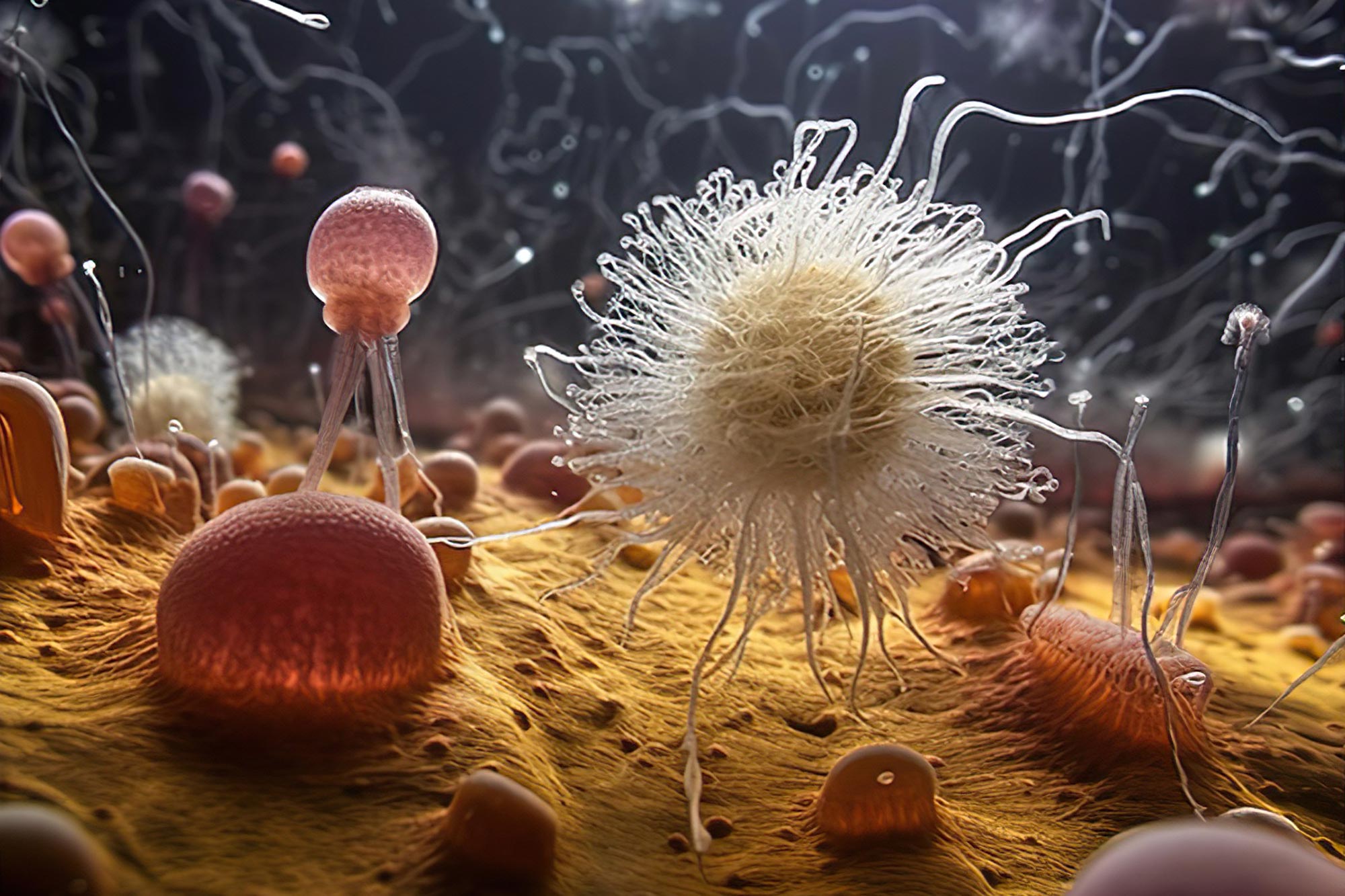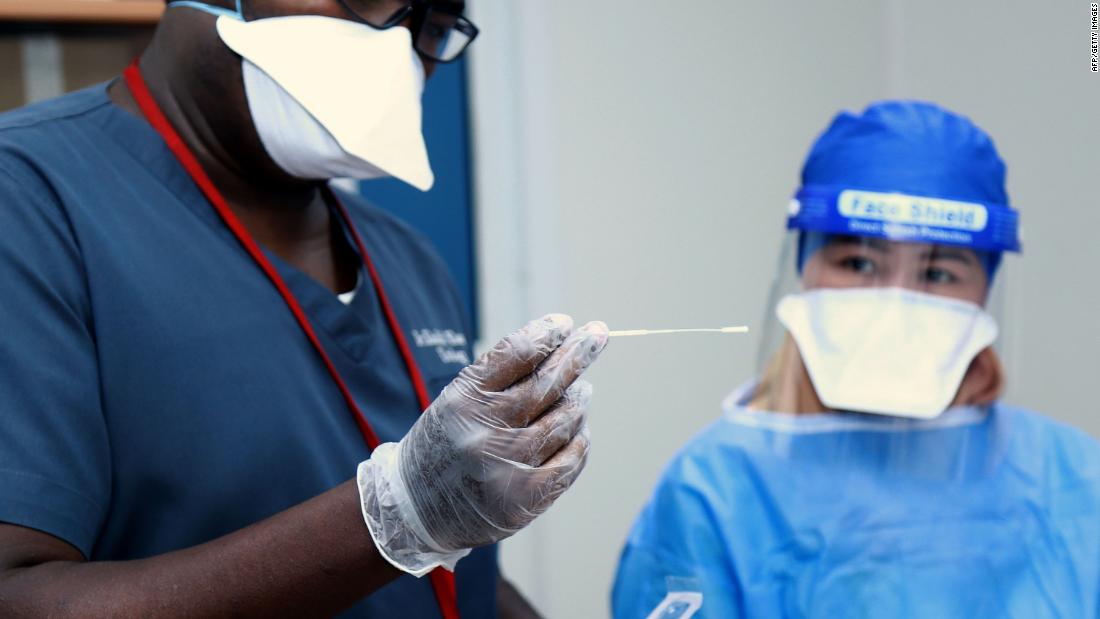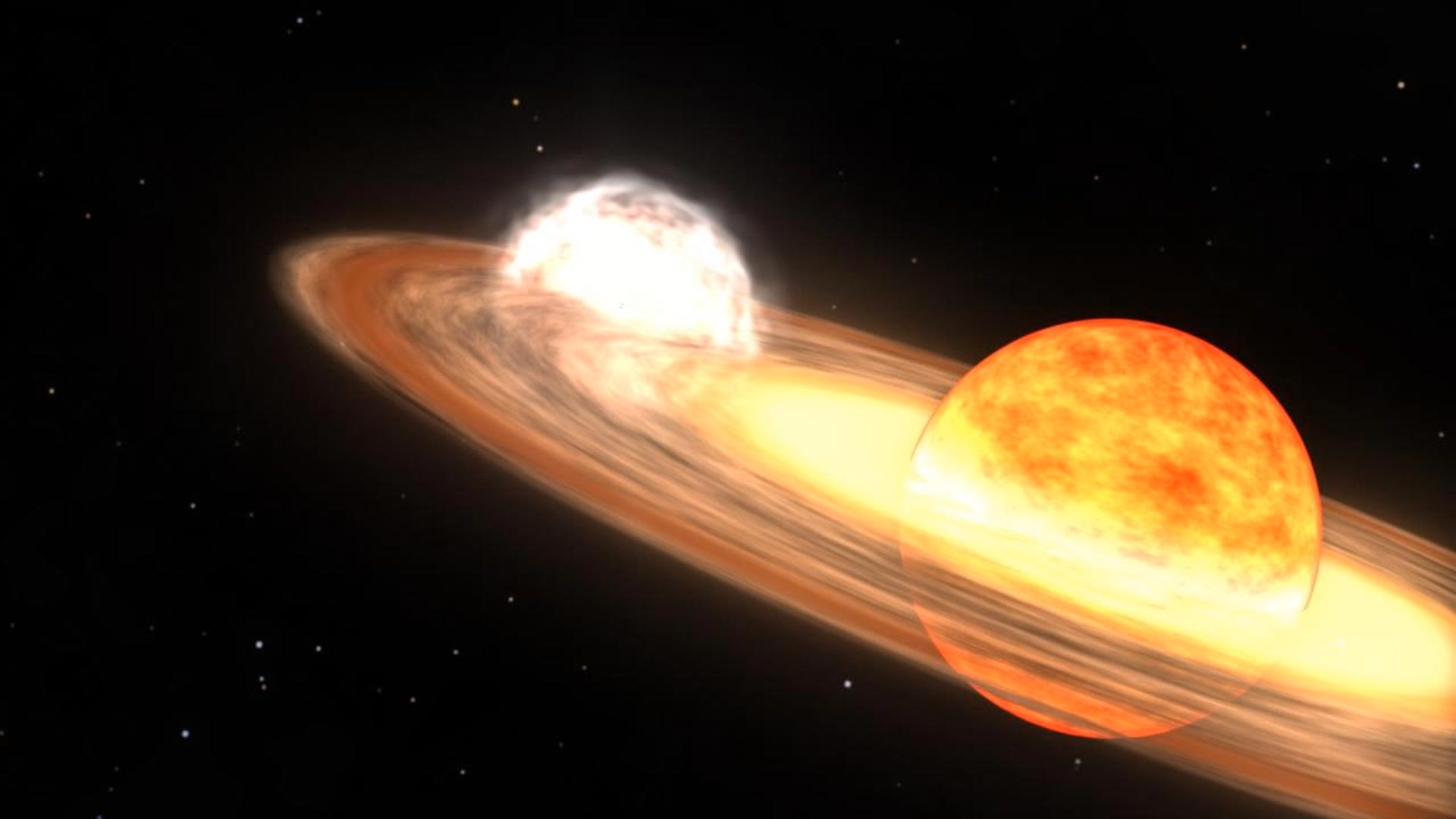przez
Wyobraźnia artysty przedstawiająca grupę prymitywnych eukariotów z „Protosterol Biota” żyjących na macie bakteryjnej na dnie oceanu. Opierając się na skamielinach molekularnych, organizmy Protosterol Biota żyły w oceanach od około 1,6 do 1,0 miliarda lat temu i są naszymi najstarszymi znanymi przodkami. Źródło: Zorganizowane w MidJourney przez TA 2023
Międzynarodowy zespół badawczy znalazł w skałach starożytne protosteroidy, co wskazuje, że złożone życie istniało już 1,6 miliarda lat temu. Cząsteczki te zapewniają nowy wgląd w ewolucję złożonego życia i godzą rozbieżności między tradycyjnymi i lipidowymi zapisami kopalnymi.
Okazuje się, że nowo odkryty zapis tzw. protosteroidów był zaskakująco obfity przez całe średniowiecze Ziemi. Pierwotne molekuły zostały wyprodukowane na wczesnym etapie złożoności eukariontów – rozszerzając obecny zapis kopalnych steroli poza 800, a nawet 1600 milionów lat temu. Eukarionty to termin nadawany królestwu życia, w tym wszystkim zwierzętom, roślinom i algom, które są oddzielone od bakterii dzięki złożonej strukturze komórkowej obejmującej jądro, a także bardziej złożonemu mechanizmowi molekularnemu.
„Najważniejszym punktem tego odkrycia nie jest po prostu rozszerzenie obecnego zapisu molekularnego eukariontów” – mówi Christian Hollmann, jeden ze współnaukowców z Niemieckiego Centrum Badań Nauk o Ziemi (GFZ) w Poczdamie. „Biorąc pod uwagę, że ostatni wspólny przodek wszystkich współczesnych eukariotów, w tym nas, ludzi, był prawdopodobnie w stanie wyprodukować„ zwykłe ”nowoczesne sterole, jest prawdopodobne, że eukarionty odpowiedzialne za te rzadkie sygnatury należą do pnia drzewa filogenetycznego”.

Benjamin Nettersheim, jeden z głównych autorów badania, analizuje mapy elementarne i molekularne w super rozdzielczości próbek skał sprzed 1,64 miliarda lat analizowanych w Geobiologicznym Laboratorium Obrazowania Molekularnego w MARUM. Źródło: MARUM – Centrum Ekologii Morza, Uniwersytet w Bremie; w Descamps
Ten „kikut” reprezentuje wspólną linię przodków, która była prekursorem wszystkich żywych gałęzi eukariontów. Jego przedstawiciele dawno wymarli, ale szczegóły dotyczące ich natury mogą rzucić więcej światła na okoliczności towarzyszące ewolucji złożonego życia. Chociaż potrzebne są dalsze badania, aby ocenić, jaki procent protosteroidów może mieć rzadkie źródło bakteryjne, odkrycie tych nowych cząsteczek nie tylko godzi zapis geologiczny tradycyjnych skamielin z zapisem cząsteczek tłuszczu kopalnego, ale daje rzadki i bezprecedensowy wgląd w świat zagubiony ze starego życia. Konkurencyjny upadek eukariontów z grup macierzystych, naznaczony pierwszym pojawieniem się współczesnych skamieniałych zrębów około 800 milionów lat temu, może odzwierciedlać jedno z najtrwalszych wydarzeń w ewolucji coraz bardziej złożonego życia.
dodaje Benjamin Nittersheim z Marom, University of Bremen, który był współautorem badania wraz z Jochenem Brooksem z[{” attribute=””>Australian National University (ANU) – “due to potentially adverse health effects of elevated cholesterol levels in humans, cholesterol doesn’t have the best reputation from a medical perspective. However, these lipid molecules are integral parts of eukaryotic cell membranes where they aid in a variety of physiological functions. By searching for fossilized steroids in ancient rocks, we can trace the evolution of increasingly complex life.”

Dr. Nettersheim inserts a thin section and rock slices of 1.64 billion-years old rocks into the 7T solariX XR FT-ICR-MS equipped with a MALDI source at the Geobiomolecular Imaging Laboratory at MARUM. As part of ongoing research into mid-Proterozoic biomarker signatures at MARUM, GFZ and the Australian National University, Dr. Nettersheim aims to zoom into the cradle of eukaryotic life in unprecedented resolution. Credit: MARUM – Center for Marine Environmental Sciences, University of Bremen; V. Diekamp
Nobel laureate Konrad Bloch had already speculated about such a biomarker in an essay almost 30 years ago. Bloch suggested that short-lived intermediates in the modern biosynthesis of steroids may not always have been intermediates. He believed that lipid biosynthesis evolved in parallel with changing environmental conditions throughout Earth history. In contrast to Bloch, who did not believe that these ancient intermediates could ever be found, Nettersheim started searching for protosteroids in ancient rocks that were deposited at a time when those intermediates could actually have been the final product.
But how to find such molecules in ancient rocks? “We employed a combination of techniques to first convert various modern steroids to their fossilized equivalent; otherwise, we wouldn’t have even known what to look for,” says Jochen Brocks. Scientists had overlooked these molecules for decades because they do not conform to typical molecular search images. “Once we knew our target, we discovered that dozens of other rocks, taken from billion-year-old waterways across the world, were oozing with similar fossil molecules.”
The oldest samples with the biomarker are from the Barney Creek Formation in Australia and are 1.64 billion years old. The rock record of the next 800 million years only yields fossil molecules of primordial eukaryotes before molecular signatures of modern eukaryotes first appear in the Tonian period. According to Nettersheim “the Tonian Transformation emerges as one of the most profound ecological turning points in our planet´s history“. Hallmann adds that “both primordial stem groups and modern eukaryotic representatives such as red algae may have lived side by side for many hundreds of millions of years”. During this time, however, the Earth’s atmosphere became increasingly enriched with oxygen – a metabolic product of cyanobacteria and of the first eukaryotic algae – that would have been toxic to many other organisms. Later, global “Snowball Earth” glaciations occurred and the protosterol communities largely died out. The last common ancestor of all living eukaryotes may have lived 1.2 to 1.8 billion years ago. Its descendants were likely better able to survive heat and cold as well as UV radiation and displaced their primordial relatives.
“Earth was a microbial world for much of its history and left few traces,” Nettersheim concludes. Research at ANU, MARUM and GFZ continues to pursue tracing the roots of our existence – the discovery of protosterols now brings us one step closer to understanding how our earliest ancestors lived and evolved. Shooting at the ancient rocks with a laser coupled to an ultra-high resolution mass spectrometer in MARUM’s globally unique Geobiomolecular Imaging Laboratory, Dr. Nettersheim and his international collaborators aim at zooming into the cradle of eukaryotic life in unprecedented resolution to further improve our understanding of our early ancestors in the future.
Reference: “Lost world of complex life and the late rise of the eukaryotic crown” by Jochen J. Brocks, Benjamin J. Nettersheim, Pierre Adam, Philippe Schaeffer, Amber J. M. Jarrett, Nur Güneli, Tharika Liyanage, Lennart M. van Maldegem, Christian Hallmann and Janet M. Hope, 7 June 2023, Nature.
DOI: 10.1038/s41586-023-06170-w
Participating Institutions:
- Research School of Earth Sciences, The Australian National University, Canberra, Australia
- MARUM – Center for Marine Environmental Sciences, University of Bremen, Bremen, Germany
- Faculty of Geosciences, University of Bremen, Bremen, Germany
- Université de Strasbourg, CNRS, Institut de Chimie de Strasbourg, Strasbourg, France
- Northern Territory Geological Survey, Darwin, Australia
- German Research Center for Geosciences (GFZ), Potsdam, Germany
MARUM produces fundamental scientific knowledge about the role of the ocean and the ocean floor in the total Earth system. The dynamics of the ocean and the ocean floor significantly impact the entire Earth system through the interaction of geological, physical, biological and chemical processes. These influence both the climate and the global carbon cycle, and create unique biological systems. MARUM is committed to fundamental and unbiased research in the interests of society and the marine environment, and in accordance with the Sustainable Development Goals of the United Nations. It publishes its quality-assured scientific data and makes it publicly available. MARUM informs the public about new discoveries in the marine environment and provides practical knowledge through its dialogue with society. MARUM cooperates with commercial and industrial partners in accordance with its goal of protecting the marine environment.

„Podróżujący ninja. Rozrabiaka. Badacz bekonów. Ekspert od ekstremalnych alkoholi. Obrońca zombie.”




